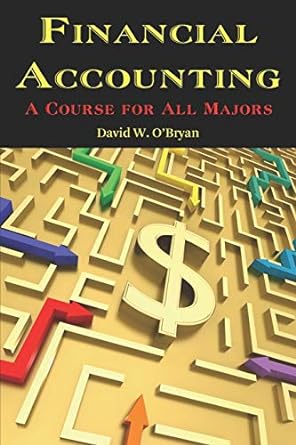Question
The purpose of this assignment is: - to demonstrate capabilities in applying principles of formal object-oriented analysis and design processes in system development TGC 2.0
The purpose of this assignment is: - to demonstrate capabilities in applying principles of formal object-oriented analysis and design processes in system development TGC 2.0 Learning Outcome(s) Assessed: ML02 Analyze and document a given application, system, or scenario to elicit system and user requirements for a new application or system (TGC 2.1, 2.3)
You are to analyze an application/system of your choosing (i.e., mobile application/web application/etc.). The chosen application must be accessible, available, and current. You are not allowed to change anything about the application. If you are not sure whether the application you chose is suitable, consult your lecturer/module facilitator for clarification. The analysis of your chosen application/system is divided into THREE (3) tasks.
Task 1: Application/System Critical Analysis [30 points] Provide an overview that contains the following information:
1. Overview/Purpose of the Application/System [5 points] Describe in detail the application's/system's purpose and services. Mention here where one may be able to find and/or use the application/system, as well as its target/intended end user demographic. History of how the application/system came to be is not required but may be useful if able to describe its intended purpose better.
2. Input(s) [5 points] Elaborate the points of interactions users need interact with the application/system (e.g., mouse, touchscreen, etc.). Describe when will users be required to use the mentioned points of input interaction with the application/system. You are advised to select an application/system that makes use of MULTIPLE input points.
3. Output(s) [5 points] Elaborate the point(s) of output users obtain when interacting with the application/system (e.g., monitor, touchscreen, speakers, etc.). Describe how users can receive useful feedback from the application/system via these output point(s). The stated feedback should have meaningful purpose (critical ones, if possible).
4. Components with inter-related components [5 points] Include outsourced components that are used to run the application/system (e.g., payment integrations, GPS, Google Maps, etc.). What other outsourced components are required for the application/system to function as intended or fulfill its intended purpose(s)?
5. Interface [5 points] Provide at least FOUR (4) DISTINCT visual screenshots of the application/system in action. In addition, give your own comments/feedback with regards to the visual interface. For example, you may comment on how the interface elements make or break a user's experience with the application/system.
6. Constraint(s) [5 points] This does not need to be exhaustive; you are to evaluate any shortcomings of the application/system and present them here. Try to figure out what irks/agitates/annoys end users first when using the application/system; this can range from non-functioning buttons or misleading links to inefficient methods of carrying out a real-time task. If the application has a review corner, you can utilize what you see there in this section. Including screenshots of critical feedback that addresses the raised criticisms can work as good reference here.
Task 2: Application/System Design [50 points] Based on your application/system of choice,
(a) Identify and elaborate at least FIVE (5) major use cases of the selected application. Expound on how each use case plays an important role in the application/system's functionality. [10 points]
(b) Hence or otherwise, show these use cases in a Use-Case Diagram of the system of your choice. You need to include at least ONE (1) extend relationship, ONE (1) include relationship, and ONE (1) generalization relationship. [15 points]
(c) Draw a Context Diagram of the current system. [10 points]
(d) Draw a Level-0 Data Flow Diagram (DFD) of the current system. Your DFD should be complete based on what has been shown in the Context Diagram. [15 points]
Task 3: System Improvement Opportunities [20 points, 5 points each] You have been recruited by the company or team behind the application/system as a systems analyst to address its shortcomings. Based on the information gathered from your analysis of the present application/system, answer the following questions with clear justifications.
1. Is the present application/system best overhauled from the ground up (i.e., conduct Business Process Reengineering (BPR)), or is it better to make incremental improvements (i.e., conduct Business Process Automation (BPA) or Business Process Improvement (BPI)) to better enhance it? Compare and contrast all THREE (3) of the requirements analysis strategies and mention how the chosen strategy's advantages best suit the given scenario.
2. What software/system development life cycle (SDLC) model can be used as a basis for the process you have chosen? Elaborate how your chosen SDLC's advantages ITS42104 Object-Oriented Analysis and Design [Individual Assignment] 5 outweigh any of its shortcomings, or how its suitability outperforms all the other SDLC models.
3. What requirements gathering techniques can be used to elicit more requirements from the intended end users to improve the application/system? How effective is it when used on the intended/target end user demographic?
You will need to refer and cite various sources (not including lecture slides) to back your justification/claims in your answers. Answers without proper references will be considered incorrect regardless of its supposed accuracy. You may also cite real life past case studies as an alternative to justify your rationale. All academic should be made in APA Referencing Format.
Evaluation The evaluation is based on a good report, a good discussion of the findings in a clear, concise, and presentable format. While there is no page limit given, you may lose points if the given responses reflect a lack of time spent on analysis or research.
Step by Step Solution
There are 3 Steps involved in it
Step: 1

Get Instant Access to Expert-Tailored Solutions
See step-by-step solutions with expert insights and AI powered tools for academic success
Step: 2

Step: 3

Ace Your Homework with AI
Get the answers you need in no time with our AI-driven, step-by-step assistance
Get Started


